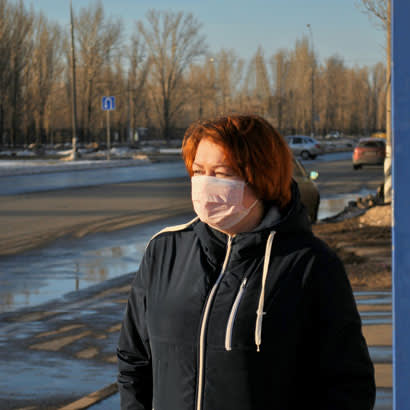
To further slow the spread of COVID-19, the Centers for Disease Control and Prevention (CDC) issued new recommendations regarding the use of cloth face coverings over the weekend. According to CDC, the recommendation is due to recent studies and data confirming that a “significant portion of individuals with coronavirus lack symptoms (“asymptomatic”) and that even those who eventually develop symptoms (“pre-symptomatic”) can transmit the virus to others before showing symptoms. This means that the virus can spread between people interacting in close proximity — for example, speaking, coughing, or sneezing — even if those people are not exhibiting symptoms.”
Recommendations on Wearing Cloth Face Coverings
With this new research, CDC now recommends that individuals wear cloth face coverings in public settings where physical distancing measures are challenging to adhere to, especially in areas of significant community-based transmission. This may include grocery stores, other stores and locations deemed essential, and in other areas across your community where physical distancing is difficult to maintain. For some park and recreation agencies, recommending that park and trail users wear masks may be beneficial. It is vital that people do not use parks and trails where proper physical distancing is not possible, and closure determinations are being made by local governmental leadership. In parks and trails that remain open, face masks can add an extra layer of protection for situations where people may occasionally come into closer proximity with one another. The good news is that these cloth face coverings can be easily fashioned from household items, and there are dozens of creative ways to make a face covering. The coverings should:
- Fit snuggly but comfortably against the side of your face
- Cover your nose and mouth
- Be secured with ties or ear loops
- Include multiple levels of fabric
- Allow for breathing without restriction
- Be able to be laundered and routinely washed
*According to CDC, cloth face coverings should not be placed on young children under age 2, anyone who has trouble breathing, or is unconscious, incapacitated or otherwise unable to remove the mask without assistance.
While this is a voluntary public health measure, it’s been widely endorsed and encouraged in many cities and states thus far. Some cities have even gone a step further to require people to cover their faces in public or when working in certain industries. For example, in San Diego County, all grocery store, gas station, convenience store, pharmacy and restaurant workers are required to wear masks.
Implications for Parks and Recreation
So, what does this mean for parks and recreation and what actions should agencies take? NRPA recommends a few key things:
- Continue to follow all local, state and national public health recommendations on the use of face coverings in public places. As we’ve seen in the last few weeks, these recommendations differ across states and local jurisdictions and can change rapidly, so monitor updates regularly.
- Reinforce the need for physical distancing measures. While this is an additional public health precaution to slow the spread, it does not by any means replace physical distancing measures. It is still imperative that we all continue to practice and promote maintaining the recommended 6 feet of physical distance between yourself and others outside of your household – this applies to children, teens and adults.
- Encourage members of the public to voluntarily wear cloth face coverings in areas where physical distancing measures are challenging to adhere to. Use your communications platforms and signage to encourage this use in particular parks, trails, or green spaces when warranted.
- Consult with local public health officials regarding your staff wearing face coverings/masks. While cloth coverings are the general recommendation from CDC for people out in public, professionals working in more high-risk settings where they are closely interacting with constituents (shelters, emergency centers, etc.) may be treated as frontline or emergency personnel and could require higher grade personal protective equipment (PPE). These decisions should be made at the local level in conjunction with public health officials and monitored over time.
The main purpose of this additional measure is to prevent people who may have the virus and not know it from spreading it to others. Again, it does not replace physical distancing. For more information on wearing face coverings, consult CDC’s frequently asked questions resource. We all must continue to practice physical distancing and other CDC recommended public health measures to slow the spread.
For more information about NRPA’s response to COVID-19, as well as available resources for park and recreation professionals, please see our Coronavirus Disease 2019 (COVID-19) webpage.
Allison Colman is NRPA’s Director of Health.

